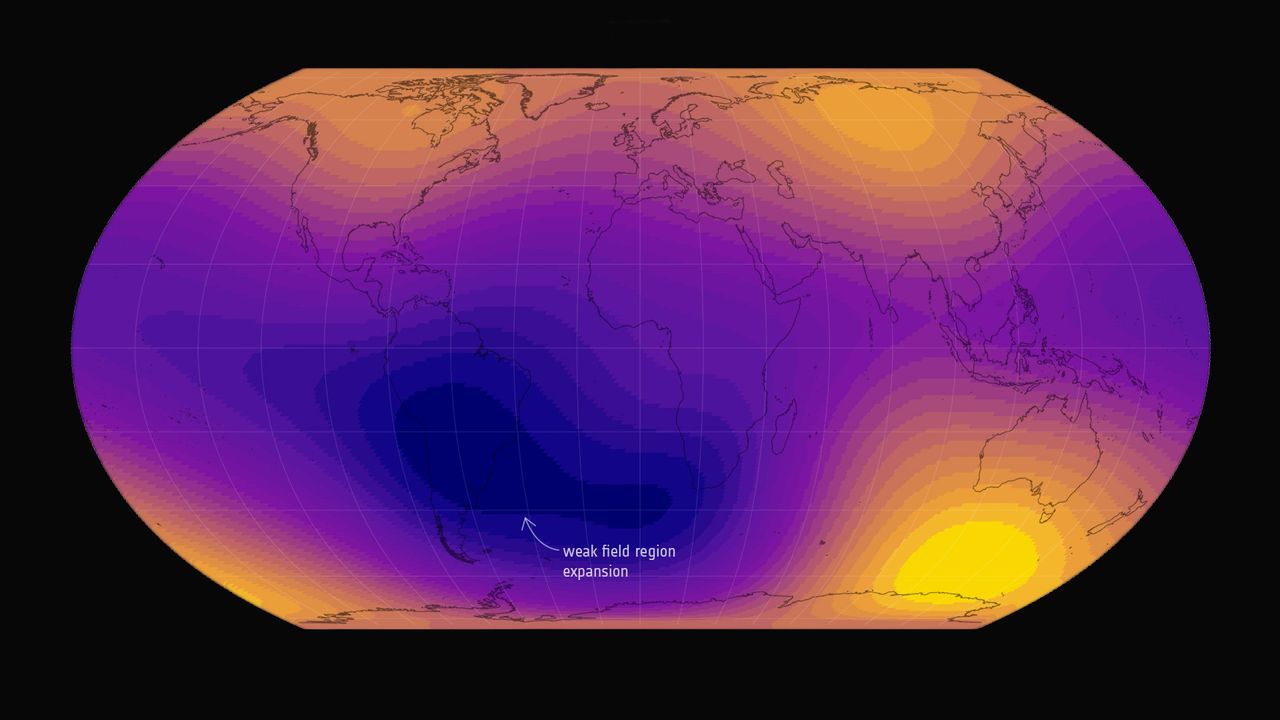A giant weak spot in Earth's magnetic field is getting bigger — and it could be bad news for satellites
NeutralScience

Recent satellite data shows that a significant weak spot in Earth's magnetic field has expanded over the past decade, now covering an area about half the size of continental Europe. This development is noteworthy as it could potentially impact satellite operations and communications, raising concerns among scientists and engineers about the implications for technology that relies on stable magnetic conditions.
— via World Pulse Now AI Editorial System